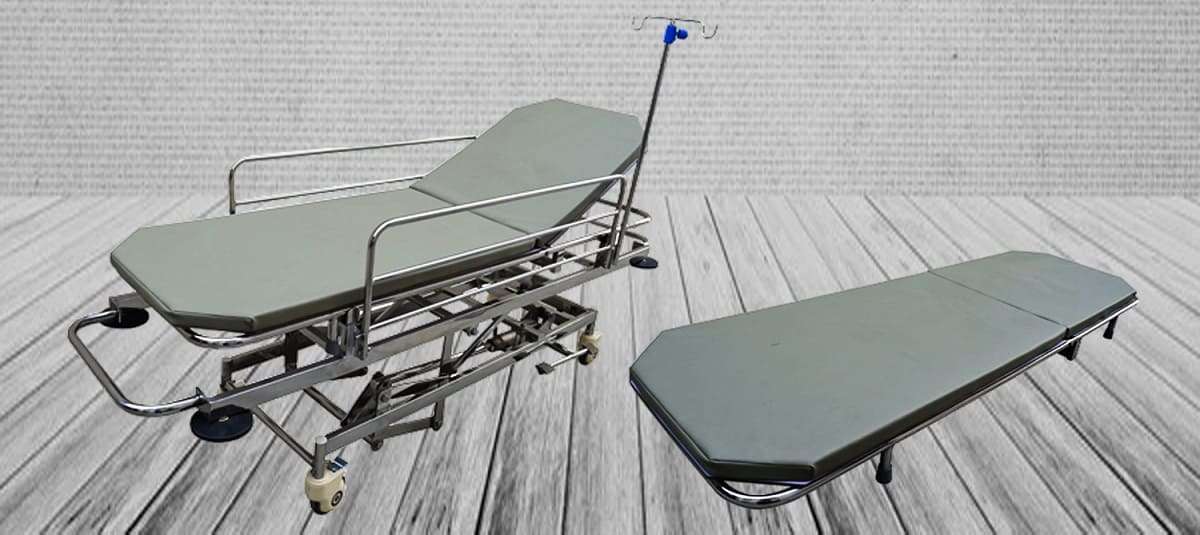Hospital Emergency Recovery Trolley, often referred to as a crash cart or resuscitation trolley, is a vital piece of equipment in hospitals and emergency care settings. It is designed to provide immediate access to essential medical supplies and medications required for emergency resuscitation and life support.

The emergency recovery trolley plays a crucial role in providing immediate and effective care to patients in critical condition. This specialized piece of medical equipment is designed to facilitate the seamless transfer and monitoring of patients during the crucial moments following a medical emergency or trauma.
The emergency recovery trolley is a versatile and indispensable tool that serves multiple purposes within the hospital setting. Its primary function is to transport patients from the emergency department or other critical care areas to the appropriate treatment or recovery unit, ensuring their safety and stability throughout the journey. Equipped with a sturdy frame, adjustable height, and a range of specialized features, the trolley allows healthcare professionals to maneuver the patient with ease, while maintaining a stable and secure environment.
One of the key features of the emergency recovery trolley is its ability to provide advanced life support. It is typically equipped with a range of medical equipment, such as oxygen tanks, cardiac monitors, and emergency resuscitation devices, enabling healthcare providers to administer immediate interventions and stabilize the patient’s condition. This rapid response capability is crucial in situations where every second counts, as it can mean the difference between life and death.
Moreover, the emergency recovery trolley is designed with the patient’s comfort and safety in mind. It often includes features such as padded mattresses, safety rails, and adjustable backrest and leg rests, ensuring that the patient remains comfortable and secure during transport. This attention to detail helps to minimize the risk of further injury or discomfort, which is of paramount importance in critical care scenarios.
In addition to its role in patient transport and stabilization, the emergency recovery trolley also serves as a mobile platform for various medical procedures and interventions. Healthcare providers can use the trolley to perform necessary diagnostic tests, administer medications, or even initiate specialized treatments, such as emergency cardiac care or trauma management, all while the patient is in transit.
The importance of the emergency recovery trolley cannot be overstated. It is a vital component of the hospital’s emergency response system, enabling healthcare professionals to provide timely and effective care to patients in critical condition. By facilitating the seamless transfer and monitoring of patients, the emergency recovery trolley plays a crucial role in improving patient outcomes and saving lives in the most challenging of medical situations.
Here’s an overview of its features, components, and uses:
Features and Components
Sturdy Frame and Wheels
- Construction: Made from durable materials like stainless steel or high-grade plastic.
- Wheels: Equipped with smooth-rolling casters, often with locking mechanisms to secure the trolley in place during use.
Multiple Drawers and Compartments
- Organization: Several drawers and compartments to organize and store a variety of medical supplies.
- Labels: Often color-coded or labeled for quick identification of contents.
Emergency Medications
- Storage: Contains a wide range of emergency medications such as epinephrine, atropine, and lidocaine.
- Security: May have locks to secure controlled substances.
Medical Equipment
- Defibrillator: Often includes an automated external defibrillator (AED) or manual defibrillator.
- Oxygen Supply: Cylinders or tanks of oxygen with appropriate masks and tubing.
- Suction Devices: Portable suction units for clearing airways.
Intravenous Supplies
- IV Fluids and Tubing: Includes saline solutions, IV bags, and associated tubing.
- Cannulas and Needles: Various sizes of IV cannulas, needles, and syringes.
Airway Management Tools
- Intubation Equipment: Laryngoscope, endotracheal tubes, and airway adjuncts like oropharyngeal and nasopharyngeal airways.
- Ambu Bag: Bag-valve-mask resuscitator for manual ventilation.
Basic Diagnostic Tools
- Stethoscope and Sphygmomanometer: For monitoring vital signs.
- Thermometer: For checking body temperature.
Cardiac Monitoring
- Electrocardiogram (ECG) Machine: For monitoring heart activity during resuscitation.
- ECG Electrodes: For attaching to the patient’s chest.
Documentation Supplies
- Forms and Charts: Emergency documentation forms, patient charts, and writing materials.
- Clipboard: For organizing paperwork.
Uses and Importance of Emergency Recovery Trolleys
Rapid Response: The trolley allows healthcare providers to respond quickly and efficiently to medical emergencies.
Centralized Supplies: Keeps all necessary emergency equipment and medications in one place, reducing the time spent searching for supplies during critical moments.
Standardization: Standardized layout and contents help ensure that all team members are familiar with the location of supplies and equipment, facilitating coordinated and effective emergency care.
Portability: Easily movable to the patient’s bedside or any location within the hospital where an emergency occurs.
Maintenance and Training
Regular Checks: Frequent checks and restocking are essential to ensure all supplies are up-to-date and available.
Staff Training: Continuous training for medical staff on the contents and use of the emergency recovery trolley is crucial for maintaining readiness.
Conclusion
The Hospital Emergency Recovery Trolley is an indispensable tool in emergency medical care, providing a structured and accessible system for lifesaving interventions. Its proper maintenance and strategic use are crucial for the effectiveness of emergency response teams in critical situations.